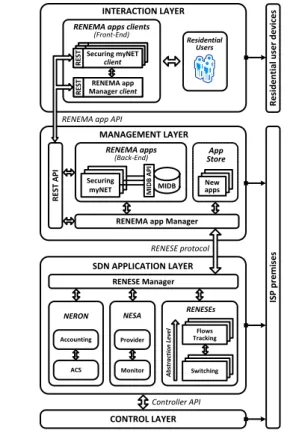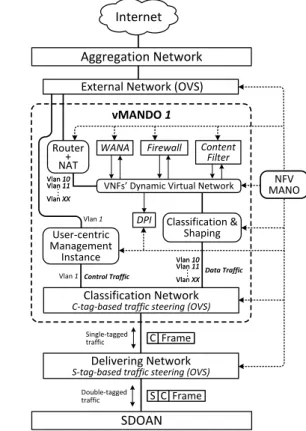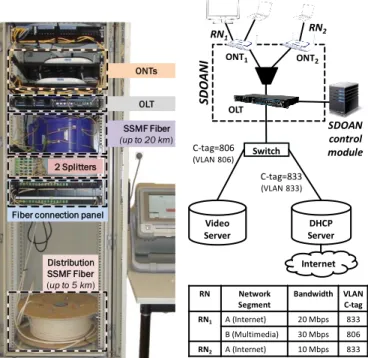NFV based QoS provision for Software Defined Optical Access and residential networks
Texto completo
Figure




Documento similar
We propose to model the software system in a pragmatic way using as a design technique the well-known design patterns; from these models, the corresponding formal per- formance
The first advantage of the router-assistant approach is the very low development cost required to integrate a router with a given host-based
For this purpose user applications for distance learning were enhanced with QoS network control via RSVP and ATM signaling.. Students and teachers at universities and schools
To perform the aggregation process a router uses variable HAU, which contains the highest packet acknowledged to its upstream neighbor, this is, the sequence number contained in
• Network Slicing: A management mechanism that Network Slice Provider can use to allocate dedicated infrastructure resources and service functions to the user of the Network
• For those nodes and (mobile) routers with standard MIPv6 support, an address delegation mechanism, based on protocol for carrying authentication for network access (PANA) [15]
In this thesis, we present a neural network architecture based on Mixture Density Networks to explicitly learn the channel model for end-to-end communications for SISO and
In this chapter, we demonstrated that the accuracy of stand-alone mmWave location systems highly depends on the antenna array orientation. To address this problem, we